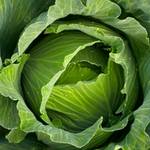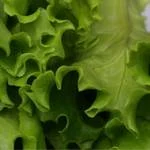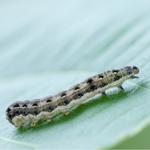
How to Grow Broccoli Seeds
Grow Guide #2236
Family: Brassicaceae
Binomial name: Brassica oleracea
Life Cycle: Biennial (usually grown as an annual)
This 'How to Grow' guide details everything a home gardener needs to know to plant, grow and care for Broccoli (Brassica oleracea).
In this guide, broccoli plants are classified as head-forming types or leaf types. Head-forming types of broccoli are grown primarily for their heads (clusters of flower buds), though their leaves and stems may also be eaten. This group includes both standard broccoli and sprouting broccoli. Leaf types of broccoli are grown primarily for their leaves and stems; often the entire plant is harvested at once. This group includes Chinese broccoli and Spigariello.
Some other plants are known as ‘broccoli’ but are different species botanically. This guide is still relevant as these plants are grown in the same way as broccoli. Rapini or broccoli raab (Brassica rapa) is an example that’s grown in a similar way to head-forming broccoli.
When to Sow Broccoli Seeds
Broccoli is a cool season crop. Use the table below to identify the best time of year to sow broccoli in your climate.
| JAN | FEB | MAR | APR | MAY | JUN | JUL | AUG | SEP | OCT | NOV | DEC | |
|---|---|---|---|---|---|---|---|---|---|---|---|---|
| Cool | ||||||||||||
| Temperate | ||||||||||||
| Sub-Tropical | ||||||||||||
| Tropical | ||||||||||||
| Arid |
Preparation
Broccoli plants are best grown in full sun. Choose a location that will receive at least 6 hours of full sun each day.
Broccoli plants need a well drained soil enriched with plenty of organic matter. Prepare soil by weeding it thoroughly, digging it over to loosen it and adding aged animal manure or compost. Keep the area free of weeds until planting. Learn more about preparing soil for planting here.
How to Sow Broccoli Seeds
Broccoli seeds do not require any treatment (eg soaking, stratification) before sowing.
Broccoli seeds can be sown directly into the garden OR seedlings can be raised in trays or other containers and transplanted to the garden once established.
Sow Direct
- Sow seeds directly in the garden 5mm deep and 35-45cm apart, with rows 40-60cm apart.
- Keep soil moist but never wet or dry.
- Seeds should germinate in around 3-7 days at a soil temperature of 8-30°C.
- Young seedlings will need protection from pests, pets and weather until they are established.
Raise Seedlings
- Fill trays, punnets or jiffy pots with a good quality seed-raising mix, or use soil starter pellets.
- Sow seeds 5mm deep.
- Keep soil moist but never wet or dry.
- Seeds should germinate in around 3-7 days at a soil temperature of 8-30°C.
- Transplant seedlings to the garden once they have their first true leaves and are large enough to handle (usually 5-10cm tall).
- Plant out, spacing plants 35-45cm apart, with rows 40-60cm apart.
Broccoli is a cool season crop that will bolt in very hot weather. Do not transplant seedlings or sow seeds outside in very warm temperatures.
How to Grow Broccoli
Broccoli plants may need watering during the growing season. Water when the soil is dry about 5cm below the surface (test this by scratching away a little soil with your finger). Water deeply in the early morning or late afternoon. Avoid watering the leaves of plants to avoid fungal diseases. Learn more about watering here.
If soil was well prepared no extra fertiliser should be necessary. In poor soil or to give your plants an extra boost, application of a fertiliser can be beneficial:
- Apply slow release fertiliser at the recommended rate when transplanting or when seedlings are 5-10cm tall.
- Apply liquid fertiliser at the recommended rate and frequency when plants are forming heads.
Head-forming types - Use a balanced fertiliser or one formulated for fruit and vegetables.
Leaf types - Use a high-nitrogen fertiliser or one formulated for leafy greens or herbs.
How to Harvest Broccoli
Broccoli should be ready to harvest in approximately 60-120 days.
Head-forming types - Heads are ready to be harvested when they are fully grown but before any flowers open. Cut off the head with about 10-15cm of stem. Plants will continue to produce new side shoots after the initial harvest. Store heads in a perforated plastic bag in the fridge. For long term storage, broccoli can be blanched then frozen.
Leaf types - Plants are ready to harvest when they are fully grown and before any flowers open. Cut whole plants just above soil level. Eat broccoli leaves and stems as soon as possible after harvesting. Store leaves short term in a perforated plastic bag in the fridge. For long term storage leaves and stems can be pickled.
Common Problems when Growing Broccoli
Like all plants, broccoli is susceptible to some pests, diseases and other problems. Below is a list of the most common problems gardeners encounter when growing broccoli plants:
 Cabbage moth and cabbage white butterfly have white or grey wings with distinctive markings. They lay their eggs on the underside of leaves. Their caterpillars feed on the leaves, creating large holes and sometimes skeletonising the leaves. Use netting to exclude butterflies and moths or decoys to deter them. Pick the caterpillars off the plants or use an appropriate spray in a selective and targeted way. Read more about cabbage moth and cabbage white butterfly here.
Cabbage moth and cabbage white butterfly have white or grey wings with distinctive markings. They lay their eggs on the underside of leaves. Their caterpillars feed on the leaves, creating large holes and sometimes skeletonising the leaves. Use netting to exclude butterflies and moths or decoys to deter them. Pick the caterpillars off the plants or use an appropriate spray in a selective and targeted way. Read more about cabbage moth and cabbage white butterfly here. Heads not forming is usually caused by warm weather or by growing plants too slowly, without adequate water or nutrients. Check to make sure you are growing a head-forming type of broccoli. In warm climates, grow broccoli in autumn and spring to avoid extreme temperatures. Water regularly and ensure adequate compost or fertiliser is applied.
Heads not forming is usually caused by warm weather or by growing plants too slowly, without adequate water or nutrients. Check to make sure you are growing a head-forming type of broccoli. In warm climates, grow broccoli in autumn and spring to avoid extreme temperatures. Water regularly and ensure adequate compost or fertiliser is applied. Bolting is when a plant prematurely flowers and goes to seed. Bolting can be caused by a period of extreme weather. Avoid sowing seed until after the danger of frosts has passed or in very hot weather. Water plants regularly and deeply in hot weather to prevent them suffering heat stress.
Bolting is when a plant prematurely flowers and goes to seed. Bolting can be caused by a period of extreme weather. Avoid sowing seed until after the danger of frosts has passed or in very hot weather. Water plants regularly and deeply in hot weather to prevent them suffering heat stress. Bitter taste can be caused by plants growing too slowly, suffering a setback in growth or being harvested too late. Enrich soil with aged manure before planting, ensure plants are watered deeply and regularly, and harvest when they are young and tender.
Bitter taste can be caused by plants growing too slowly, suffering a setback in growth or being harvested too late. Enrich soil with aged manure before planting, ensure plants are watered deeply and regularly, and harvest when they are young and tender. Hollow stems can be caused by warm weather or by too much nitrogen in the soil. In warm climates, grow broccoli in autumn and spring to avoid extreme temperatures. Do not overfeed plants with high-nitrogen fertilisers. Plants with hollow stems can be eaten as long as the stems are not rotten.
Hollow stems can be caused by warm weather or by too much nitrogen in the soil. In warm climates, grow broccoli in autumn and spring to avoid extreme temperatures. Do not overfeed plants with high-nitrogen fertilisers. Plants with hollow stems can be eaten as long as the stems are not rotten. Aphids are small (2-4mm long) sap-sucking insects that congregate on the new shoots or the undersides of leaves. They can cause leaves to wilt or become discoloured, and also excrete honeydew which can attract ants and other insect pests. To manage aphids, remove them by spraying with a garden hose, apply a soap or alcohol spray, or encourage predatory insects to your garden. Read more about aphids here.
Aphids are small (2-4mm long) sap-sucking insects that congregate on the new shoots or the undersides of leaves. They can cause leaves to wilt or become discoloured, and also excrete honeydew which can attract ants and other insect pests. To manage aphids, remove them by spraying with a garden hose, apply a soap or alcohol spray, or encourage predatory insects to your garden. Read more about aphids here..jpg) Powdery mildew is caused by fungal spores reproducing on the leaves of plants. First showing as white spots on leaves, affected areas can spread quickly to cover the entire leaf surface. While rarely fatal, powdery mildew can reduce yields. Water plants at soil level (not on leaves) to prevent spreading spores, allow good air flow between plants, remove affected leaves and if necessary spray with an appropriate fungicide or homemade spray. Read more here about powdery mildew here.
Powdery mildew is caused by fungal spores reproducing on the leaves of plants. First showing as white spots on leaves, affected areas can spread quickly to cover the entire leaf surface. While rarely fatal, powdery mildew can reduce yields. Water plants at soil level (not on leaves) to prevent spreading spores, allow good air flow between plants, remove affected leaves and if necessary spray with an appropriate fungicide or homemade spray. Read more here about powdery mildew here. Possums, birds and other animals can ruin a large percentage of your harvest overnight. Physically exclude pests by using netting or cages, or try spraying plants with a pungent homemade spray made from garlic, fish oil or mustard.
Possums, birds and other animals can ruin a large percentage of your harvest overnight. Physically exclude pests by using netting or cages, or try spraying plants with a pungent homemade spray made from garlic, fish oil or mustard. Cutworms are moth larvae that live in the soil, emerging at night to feed. The caterpillars are 3-4cm long and white, grey or brown in colour. They can chew through the stems of tender seedlings, felling them at ground level. Remove cutworms by hand at night or use cardboard collars to protect the stems of seedlings.
Cutworms are moth larvae that live in the soil, emerging at night to feed. The caterpillars are 3-4cm long and white, grey or brown in colour. They can chew through the stems of tender seedlings, felling them at ground level. Remove cutworms by hand at night or use cardboard collars to protect the stems of seedlings.


.png)






